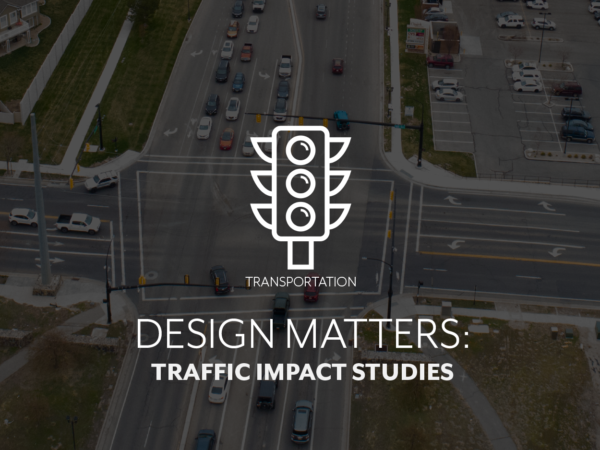
Traffic Impact Studies: Improving Growth in Utah & Idaho
Engineering Safe and Efficient Traffic Flow for Utah and Idaho Communities
When new developments or expansions to existing real estate are proposed, it’s commonly expected that they will introduce additional vehicle trips onto public roads. The significance of a Traffic Impact Study (TIS) is on the rise as it plays a crucial role in assessing these impacts accurately. A reliable TIS holds immense importance for the well-being and development of a community. An excessively conservative estimate might lead to unnecessary spending on road improvements, while an underestimate could result in unforeseen traffic congestion and safety concerns.
At FOCUS, our transportation engineers understand the paramount importance of ensuring safe and efficient traffic flow. Consequently, both public and private clients rely on our Transportation Engineering Department to create precise TIS reports that not only reflect the developer’s intentions but also equip all stakeholders with the necessary information to make informed decisions.
Comprehensive Civil Engineering Solutions
Being a comprehensive civil engineering firm, developers frequently turn to our Transportation Engineering and Planning Departments for assistance in designing roadways and accesses that promote the most efficient traffic flow. Jason Watson, the department manager, explains, “We collaborate closely with developers to offer cost-effective solutions when improvements are deemed necessary. Our traffic studies have, on numerous occasions, saved clients substantial sums by demonstrating that a development will not negatively impact traffic flow on existing roadways.”
Jason and his team employ standardized technical methods endorsed by the Institute of Transportation Engineers (ITE) to estimate the traffic generated by a new development, a process known as trip generation analysis. Additionally, they consider established policies and ordinances stipulated by local government bodies overseeing site development. The content of each study varies depending on the proposed development’s size and complexity but typically encompasses factors such as the number of trips generated, development type and size, and other pertinent area characteristics.
Detailed Traffic Impact Studies
A comprehensive TIS includes an assessment of the Level of Service (LOS), which evaluates the efficiency and safety of traffic flow along roadways and intersections. It also involves an analysis of existing and projected traffic along adjacent roads affected by the proposed development. Once future traffic volumes are projected, ITE Trip Generation Manuals come into play to estimate the traffic the project will generate. These projected traffic volumes are then integrated into the future traffic scenario. FOCUS engineers then assess existing traffic conditions, future traffic without the development, and future traffic with the development. If the LOS falls below acceptable levels, our engineers recommend on-site and off-site improvements like traffic signals, signal timing adjustments, turn lanes, additional through lanes, and more.
The timeline for completing a traffic study varies depending on the development’s size and complexity. Typically, it takes approximately two weeks to gather existing and background data, including traffic counts, analyze the data, and compile the report.
Collaborative Approach for Efficient Roadway Infrastructure
At FOCUS, we collaborate closely with developer clients to design efficient and safe roadway infrastructure. We engage in productive discussions with clients to review building conditions and analyze alternatives to assess potential network issues, the necessity for improvements, and the associated costs.
Irrespective of a development’s scale, FOCUS is equipped to deliver a traffic impact study that facilitates future growth and expansion while safeguarding the public and ensuring smooth traffic flow.
Reach out to Jason Watson, 801-352-0075 or jwatson@focusutah.com to learn how our knowledgeable, experienced team can assist you with your traffic engineering needs.
